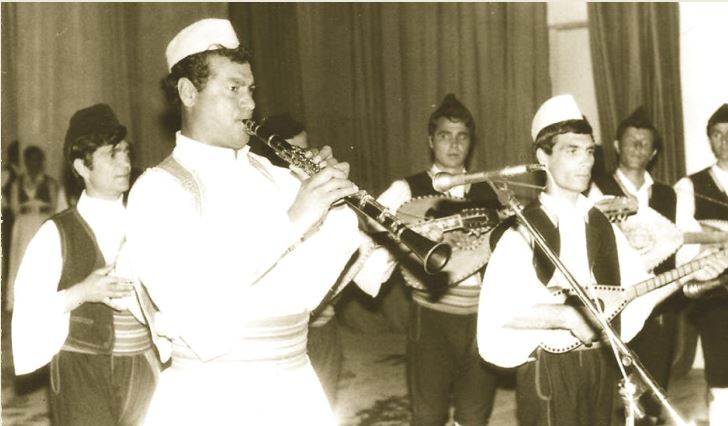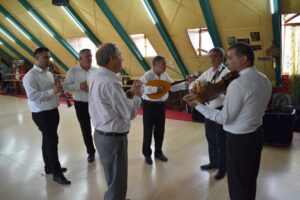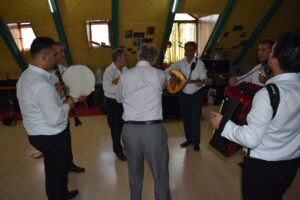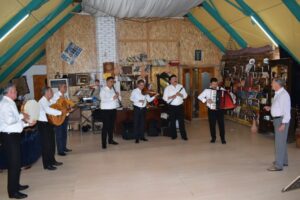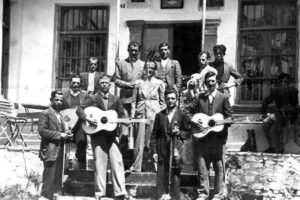Saze of Korça has always been and still is a distinguished orchestral formation with classical and traditional instruments, in view of musical and artistic life, in many social events.
Saze-s of Korça commenced their activity early in the 19th century and continue the tradition of their rendition till today, exchanging and cultivating prominent musical experiences. This formation originally included instruments, such as the gërneta or the clarinet, the violin, the dajre (tambourine-like), and the llahuta (lute-like), to be subsequently completed with the flute, the bakllama (guitar-like), the accordion, the accompaniment or melodic llahuta, performed with one or two singers as part of the performing group or even as guest singers. The most well-known saze groups included: “Demka dhe Hajro/Demka and Hajro”, “Ciloja me shokët/Ciloja with friends”, “Vllezërit Muzikanti/Musician brothers”, “Llaqi me shokët/Llaqi with friends”, with the musicians Hajro, Bido, Sherif Cobani, Sulejman Bakllamaja, as well as the woman singer Qerime Bakiu, all standing out with their impressive performances.
Saze groups are named after the soloist-leading-gërnetë-player, such as saze-s of Lulushi, Zhani Struga, Alex Xhelili, Telando Fetes, Nexhildo Sula, etc. In the composition of saze renditions, the melody is represented by gërneta, in harmony with the violin, while llahuta shows up in the harmonic accompaniment, dajre holds the rhythmic element, the contrabass or bass guitar represents the bass of the chord, and, in special cases such as avazi, the solo rendition of bakllama with typical growls or even fiddle, while the accordion at times enriches the performance harmonically, and at others lends variations to the melody of the dance, kaba, mournful cries, and the like.
The repertoire of the Saze of Korça is mainly based on the musical materials of Korça district, but also materials from Central and Northern Albania, as well as border countries such as Greece – North Macedonia, or even traditional music of other ethnocultural identities. (Roma, Egyptian, Vlach, etc.)

